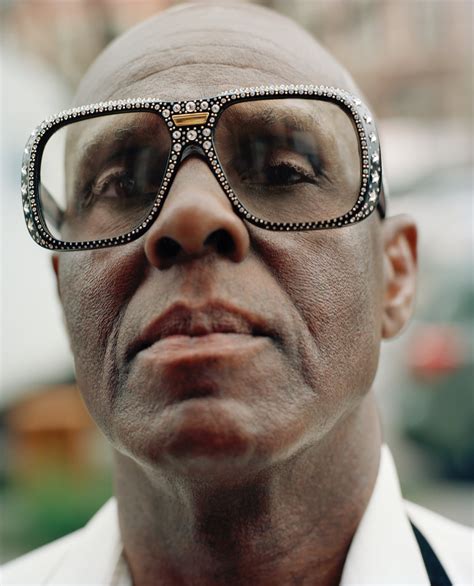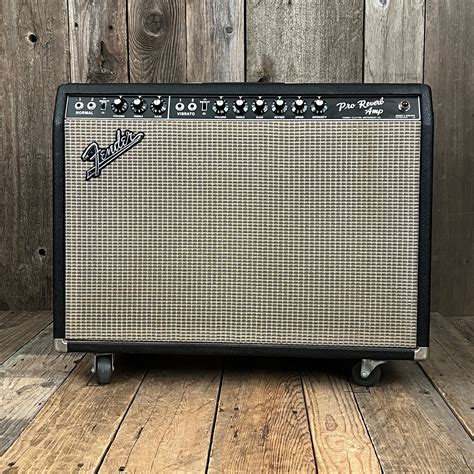fendi blackface | A History of the Fender Champ Amplifier fendi blackface The Red Knob amplifiers were produced from 1987 until 1993. They were made in Lake Oswego, Oregon, at the Sunn factory, a brand/company that Fender had purchased in 1985–86. These were some of the first models produced by the newly formed Fender Musical Instrument Corporation. Aside from the bright red controls, these amplifiers have a slightly similar appearance to the older Blackface cosmetics, bearing black control panels with white lettering a. See all available apartments for rent at Ethel Mae Fletcher Apartments in Las Vegas, NV. Ethel Mae Fletcher Apartments has rental units ranging from 650-941 sq ft starting at $767.
0 · What Gucci Learned From Dapper Dan and Its Blackface Crisis
1 · The Fender AA165 Pro Reverb
2 · How can I find out how old my amplifier is?
3 · How Dapper Dan Became Gucci's Conscience
4 · Fender amplifier
5 · Fender Super Reverbs from 1963 and ’68
6 · Black People Won't Actually Cancel Gucci, And That's The Real
7 · A History of the Fender Champ Amplifier
8 · A Guide to Black Panel Fender Amps
9 · A Brief History Of Blackface Era Amplifiers
Amount. From. To. Calculate. Get The Best Rates With xe. Via Xe's website. Euro to Bulgarian Lev conversion - Last updated May 09, 2024 13:32 UTC. Result. 1.959835 Bulgarian Lev. 1 EUR =.
Named for their black-painted control panels, Blackface Fender amps are one of the company’s most famous and coveted product series. Here's a guide to its many models.
The Red Knob amplifiers were produced from 1987 until 1993. They were made in Lake Oswego, Oregon, at the Sunn factory, a brand/company that Fender had purchased in 1985–86. These were some of the first models produced by the newly formed Fender Musical Instrument Corporation. Aside from the bright red controls, these amplifiers have a slightly similar appearance to the older Blackface cosmetics, bearing black control panels with white lettering a.Fender overhauled the Champ by fall 1964 in the “blackface” style—black Tolex covering and black front-mounted control panel with separate bass and treble controls (although a very few . Of course, the fashion industry has been touched by several racist scandals, but the blackface debate reached a fever pitch over the weekend, prompting responses from .
DATING 1951-1969 BLACKFACE, BROWNFACE, BROWN TOLEX, WHITE TOLEX OR TWEED AMPLIFIERS USING THE TUBE STICKER. On the inside of the cabinets of most Fender . Blackface Era amps maintained that faithful quality of build Fender had become famous for over the years, with a more pointed intention of creating high fidelity tone.These . Among the many distinct eras of vintage-amp production, Fender’s so-called “blackface” models are legendary. Made from late 1963 until ’67, they’re loved for the elegant .Fender’s “blackface” amplifiers made from late 1963 through ’67 have earned enduring “classic amp” status. Simultaneously collectible, they’re desired for their rich vintage tones and .
Where does cultural ignorance end and outright racism begin? It’s a question Gucci found itself confronting on February 6, 2019, when consumers took to Twitter, Instagram and . The news was particularly egregious coming after two Virginia politicians admitted to posing in blackface in the ’80s: on Wednesday, February 6, images spread on social media . Named for their black-painted control panels, Blackface Fender amps are one of the company’s most famous and coveted product series. Here's a guide to its many models.
Aside from the bright red controls, these amplifiers have a slightly similar appearance to the older Blackface cosmetics, bearing black control panels with white lettering and the late 1970s "scripted tailless" Fender logo.Fender overhauled the Champ by fall 1964 in the “blackface” style—black Tolex covering and black front-mounted control panel with separate bass and treble controls (although a very few transitional models were made in which the blackface style was applied to the last of the older top-panel cabinets). Of course, the fashion industry has been touched by several racist scandals, but the blackface debate reached a fever pitch over the weekend, prompting responses from Spike Lee and T.I.DATING 1951-1969 BLACKFACE, BROWNFACE, BROWN TOLEX, WHITE TOLEX OR TWEED AMPLIFIERS USING THE TUBE STICKER. On the inside of the cabinets of most Fender amps made after 1950 and before 1970, there might be a “tube location” sticker.
Blackface Era amps maintained that faithful quality of build Fender had become famous for over the years, with a more pointed intention of creating high fidelity tone.These created headway for a midrange control in their tone stacks although some circuits still replaced the potential midrange control with a fixed resistor, like the Deluxe .
Among the many distinct eras of vintage-amp production, Fender’s so-called “blackface” models are legendary. Made from late 1963 until ’67, they’re loved for the elegant black control panel and their toothsome, versatile tone.Fender’s “blackface” amplifiers made from late 1963 through ’67 have earned enduring “classic amp” status. Simultaneously collectible, they’re desired for their rich vintage tones and renowned as everyday workhorses that cover several sonic bases better than many bells-and-whistles amps manufactured today. Where does cultural ignorance end and outright racism begin? It’s a question Gucci found itself confronting on February 6, 2019, when consumers took to Twitter, Instagram and other social media platforms to express outrage over an 0 sweater resembling blackface that .
What Gucci Learned From Dapper Dan and Its Blackface Crisis
The news was particularly egregious coming after two Virginia politicians admitted to posing in blackface in the ’80s: on Wednesday, February 6, images spread on social media of a balaclava . Named for their black-painted control panels, Blackface Fender amps are one of the company’s most famous and coveted product series. Here's a guide to its many models.
Aside from the bright red controls, these amplifiers have a slightly similar appearance to the older Blackface cosmetics, bearing black control panels with white lettering and the late 1970s "scripted tailless" Fender logo.
Fender overhauled the Champ by fall 1964 in the “blackface” style—black Tolex covering and black front-mounted control panel with separate bass and treble controls (although a very few transitional models were made in which the blackface style was applied to the last of the older top-panel cabinets). Of course, the fashion industry has been touched by several racist scandals, but the blackface debate reached a fever pitch over the weekend, prompting responses from Spike Lee and T.I.DATING 1951-1969 BLACKFACE, BROWNFACE, BROWN TOLEX, WHITE TOLEX OR TWEED AMPLIFIERS USING THE TUBE STICKER. On the inside of the cabinets of most Fender amps made after 1950 and before 1970, there might be a “tube location” sticker.
Blackface Era amps maintained that faithful quality of build Fender had become famous for over the years, with a more pointed intention of creating high fidelity tone.These created headway for a midrange control in their tone stacks although some circuits still replaced the potential midrange control with a fixed resistor, like the Deluxe . Among the many distinct eras of vintage-amp production, Fender’s so-called “blackface” models are legendary. Made from late 1963 until ’67, they’re loved for the elegant black control panel and their toothsome, versatile tone.Fender’s “blackface” amplifiers made from late 1963 through ’67 have earned enduring “classic amp” status. Simultaneously collectible, they’re desired for their rich vintage tones and renowned as everyday workhorses that cover several sonic bases better than many bells-and-whistles amps manufactured today.
Where does cultural ignorance end and outright racism begin? It’s a question Gucci found itself confronting on February 6, 2019, when consumers took to Twitter, Instagram and other social media platforms to express outrage over an 0 sweater resembling blackface that .
The Fender AA165 Pro Reverb
burberry brit hooded wool duffle coat

burberry brit goldwell lightweight puffer coat

How can I find out how old my amplifier is?
The Forbidden Land, Eureka Anemos is a level 70 field operation introduced in patch 4.25 with Stormblood . It is the first of four areas in The Forbidden Land, Eureka. Anemos is notably windy, with perpetual tornadoes even when the weather is otherwise clear.
fendi blackface|A History of the Fender Champ Amplifier


























